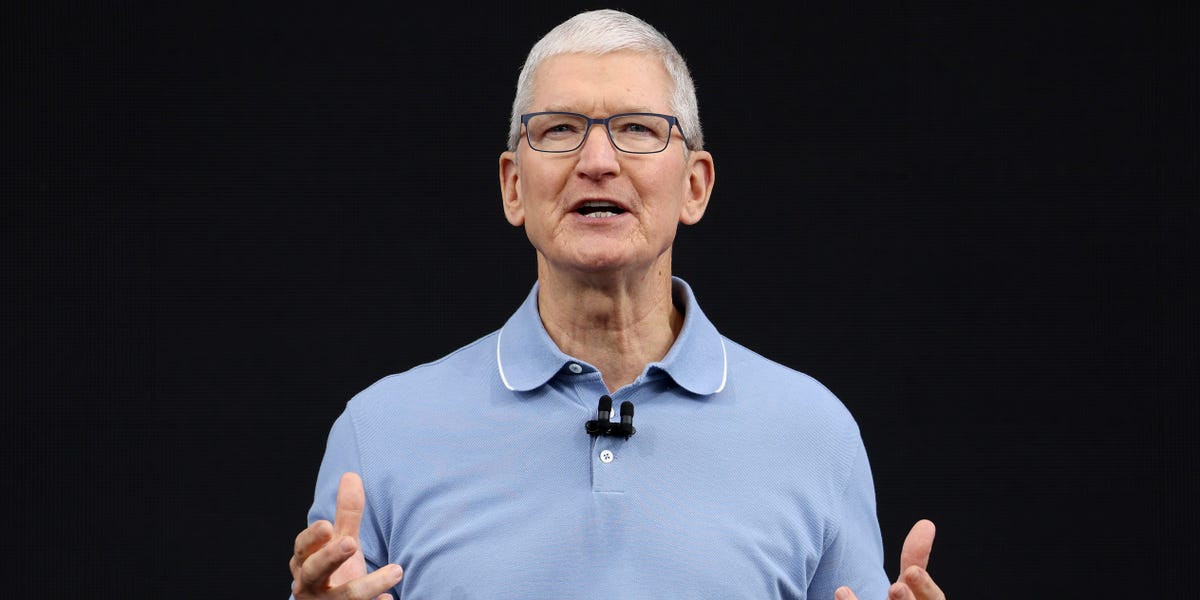As businesses confront the repercussions of AI’s significant impact on the technology landscape, the integration of AI into their fundamental strategies has become a critical necessity for maintaining competitiveness. According to esteemed expert and Forbes Contributor Bernard Marr, a forward-thinking approach that combines technical proficiency with strategic foresight is indispensable in this fast-paced digital era. The demand for individuals who possess this unique blend of skills at the highest level is escalating.
The corporate realm is witnessing the rise of a new C-suite member – the Chief AI Officer (CAIO). As highlighted by CIO Magazine, this position is gaining prominence for its potential to foster innovation and drive growth across businesses of varying scales.
In a manner reminiscent of the transformative influence that the Chief Digital Officer (CDO) wielded during the advent of the digital age, the emergence of the Chief AI Officer (CAIO) signifies a pivotal force for innovation. Equipped with profound expertise in AI technologies and a visionary outlook on harnessing these systems, CAIOs are strategically positioned to propel enterprises towards unparalleled growth and disruptive market evolution.
The CAIO is tasked with harmonizing the growth of two previously disparate domains that are now intricately linked – the analytical world of data science and engineering, and the human-centric realm of leadership, vision, and judgment.
The collision of these domains carries profound implications. While potent AI capabilities are now more accessible than ever, it is imperative that they are guided with precision by leaders who comprehend how technology shapes society over time.
Where can such exceptional individuals be identified today? Can CAIOs navigate the leadership challenges and financial constraints that ensnared many CDOs, diverting their focus from innovation? How will CAIOs effectively communicate the intricacies and potentials of AI advancements to secure buy-in from key stakeholders such as the C-suite, board members, and beyond?
With the CAIO role still in its infancy, Business Insider reports that businesses are venturing into relatively uncharted territory. Nevertheless, enlisting a specialized executive to navigate this landscape is swiftly becoming as crucial as appointing a CFO or CMO for organizations aiming to lead in the AI-driven market landscape. The CAIO is poised to be the most transformative addition to the C-suite thus far.
Significance of Having a CAIO
As we navigate through 2024, the AI landscape is poised to evolve at an unprecedented pace. Expecting traditional executives to stay abreast of these advancements while devising implementation strategies may prove impractical. Introducing a Chief AI Officer (CAIO) confers a strategic advantage, guiding organizations through the intricacies of AI integration and ensuring a competitive edge in the digital transformation journey.
Rapid Pace of AI Innovation Surpasses Conventional Leadership Capacities
The rapid evolution and complexity of AI system development make it nearly impossible for existing executives to master while fulfilling their primary responsibilities. Breakthroughs in natural language processing, computer vision, prediction, and automation emerge incessantly. Distinguishing between hype and reality and comprehending the implications across the enterprise necessitates specialized immersion; appointing a dedicated CAIO enables proactive leadership in charting your organization’s AI trajectory.
Addressing the Talent Gap in AI Expertise
Leading the adoption of enterprise AI necessitates more than theoretical knowledge – it requires proven engineering acumen coupled with creativity to translate models into business value. This specialized skill set combines analytical thinking with visionary foresight – a rare blend that demands targeted recruitment. Given the soaring demand for AI talent, attracting these industry luminaries entails investing in competitive compensation and branding. Attempting to upskill current staff often proves inadequately slow for this swiftly evolving domain.
Interdisciplinary, Strategic Leadership
Beyond possessing deep AI fluency, CAIOs stand out through their versatile, cross-disciplinary mindset. They bridge comprehension across diverse domains to pinpoint areas where infusing intelligence catalyzes transformation. Once opportunities crystallize, CAIOs continue to orchestrate tailored solutions that resonate with technical and non-technical teams alike. This holistic oversight is crucial for seamlessly integrating AI across functions rather than within disjointed silos.
Authority to Propel Adoption
For CAIOs to steer the coordinated AI adoption that an organization requires, they must function as equals within the C-suite, not as subordinate managers. This executive stature empowers CAIOs to effectively communicate with fellow leaders to secure essential buy-in. Supported by budget and authority, CAIOs can more persuasively motivate the company towards an intelligent future – outlining the possibilities while prudently guiding ethical considerations and evaluating risks related to job automation. This delicate balancing act necessitates wielding influential power in shaping strategies within the boardroom.
Duties of the CAIO Role
While the title of CAIO denotes a prestigious senior position, the actual responsibilities attached to the role are substantial. Those assuming the mantle of directing an organization’s AI strategy undertake a diverse array of tasks – some exhilarating due to their innovative nature, others tedious yet pivotal. From outlining a comprehensive strategic roadmap to mitigating ethical risks associated with specific solutions, the oversight and accountability of CAIOs span a wide spectrum. The multifaceted aspects of the role manifest across five core responsibilities:
Formulating an AI Vision and Strategy
A fundamental mandate for CAIOs involves crafting a compelling vision and holistic strategy for their organization’s AI adoption. This encompasses accurately evaluating current AI capabilities and aligning emerging technology with business objectives to identify the most promising applications. The strategy must also delineate practical steps for developing or procuring AI solutions with a focus on maximizing business value.
Identifying Use Cases and Feasibility
CAIOs remain vigilant in monitoring AI advancements and new capabilities that could unlock value. They meticulously match high-potential use cases with internal datasets, infrastructure, and talent to ascertain feasibility. A keen eye for recognizing opportunities where integrating intelligence into processes or offerings enhances competitiveness is crucial.
Building and Managing AI Talent
While some CAIOs operate as solo entities, they are fundamentally team builders. CAIOs assemble cross-functional teams comprising individuals from data science, engineering, and business backgrounds. They cultivate programs for talent development to enhance internal AI capabilities. Once the team is in place, CAIOs oversee implementations by fostering collaboration across different specialties and departments.
Advocacy and Education
Demystifying AI and articulating its practical potential across an organization represents another key responsibility of CAIOs. Through various platforms, training sessions, and candid discussions, CAIOs shed light on the capabilities and limitations of AI for executives and staff members alike. They also highlight potential biases and concerns related to job displacement to manage expectations prudently.
Governance and Risk Management
CAIOs are acutely aware that while AI propels progress, its application introduces new ethical considerations. They establish governance policies that uphold fairness, transparency, and accountability. CAIOs also monitor regulatory landscapes to ensure compliance. Identifying and mitigating unintended consequences remains imperative.
Identifying Ideal CAIO Candidates
Identifying the right CAIO presents a formidable challenge for most companies. The ideal candidate profile blends technical expertise with strategic leadership skills, a combination not easily found in a single individual. While expectations must remain realistic, prioritizing a few key attributes helps identify strong candidates for the pioneering CAIO role. Critical factors to assess include:
Seasoned AI/ML Expertise
When evaluating CAIO candidates, concrete expertise in AI/ML engineering remains non-negotiable. Leaders who merely keep abreast of AI trends and terminology without practical experience in building, deploying, managing, and iterating on AI systems fall short. Opting for talent with battle-tested skill sets from spearheading impactful models is crucial.
Interdisciplinary Proficiency
Look beyond strictly technical backgrounds when assessing potential CAIOs. Seek out dynamic leaders with interdisciplinary agility – those who can fluently discuss code architectures as well as business objectives. The CAIO role demands the effective connection of AI’s technical aspects to the overarching enterprise mission. Diverse educational or professional backgrounds that span multiple domains signal the desired versatility.
Strategic Innovation
Creative instincts play a pivotal role in viable CAIOs. Look for signs of ingenuity and strategic thinking in a candidate’s communication style and past projects. Combine this visionary exploration with decision-making grounded in analytical rigor. This balanced blend fosters organizations poised for success stories in AI rather than stalled experiments.
Trailblazers in Transformation
Round out the assessment criteria for CAIOs by examining their demonstrated business impact. Highlight leaders who have spearheaded the design and implementation of AI applications that solve problems, seize growth opportunities, or enhance key performance metrics for their previous organizations. Real-world transformation achievements validate their ability to replicate such successes in your organization.
As the integration of AI in business matures, the criteria for an exceptional CAIO will evolve over time. Presently, companies should focus on seeking individuals with a unique blend of expertise in technology development, complex project execution, visionary strategy, and ethical application. While certain skill gaps may persist among current talent pools, astute hiring teams will identify adjacent skill sets that can be further developed after onboarding high-potential CAIOs. Committing to both short-term and long-term leadership growth is crucial to successfully propel your organization’s AI journey.
Implications and Advantages of Appointing a CAIO
By introducing a Chief AI Officer into your organization, you instantly enhance its AI capabilities, driving tangible transformation across four critical performance dimensions: competitiveness, customer experience, operations, and strategic data utilization. Their strategies and initiatives infuse intelligence where it yields the most significant impact.
Competitive Advantage
Appointing a CAIO focuses organizational efforts on leveraging AI for innovation and distinctiveness; as technology becomes increasingly standardized, a CAIO’s leadership in enhancing intelligent products and services future-proofs competitiveness. Companies guided by the strategic foresight of a CAIO stand to gain a first-mover advantage.
Enhanced Customer Experiences
CAIOs orchestrate the assimilation of AI to deepen customer engagement through hyper-personalization, predictive recommendations, and conversational interfaces. Continuous analysis of feedback loops offers insights to refine engagement strategies continually. Internally, reduced support ticket volumes and streamlined customer journeys signal progress.
Efficiency and Automation
Process optimization represents another area ripe for AI infusion under CAIO leadership. From supply chain management to manufacturing to financial operations, repetitive tasks are reimagined through intelligent automation. Liberating human capital allows reinvestment in more strategic initiatives with higher value propositions.
Informed Decision-Making
Lastly, CAIOs recognize that an organization’s data holds untapped potential to guide strategic directions. Predictive capabilities unveil trends and behaviors, while prescriptive modeling steers optimal actions, catalyzing accelerated growth.
Rather than adopting a passive stance towards intelligent technologies, establishing leadership through a CAIO proactively positions your company for AI readiness in the short and long term. While change aversion may hinder progress, the CAIO remains steadfast in leveraging promising AI capabilities to drive advancement. They propel organizations forward with vision and urgency, ultimately yielding compounding dividends through enhanced competitiveness, customer loyalty, operational efficiency, and strategic direction-setting.
The Path Ahead
Fundamentally, enterprises are at a crossroads – they can either passively observe as AI reshapes competitive landscapes or proactively establish internal leadership to navigate an intelligent trajectory. Companies that fail to formulate a proactive strategy risk relinquishing authority to competitors who are racing to harness AI’s potential.
Appointing a Chief AI Officer expedites coherent, ethical adoption and value extraction. As stewards, CAIOs amalgamate technical expertise with creative applications to identify the most promising AI use cases. They assemble cross-functional teams to implement solutions while fostering collaboration across various disciplines. Through comprehensive oversight and effective change management, CAIOs unleash transformative potential.
The challenge of filling this novel strategic role persists, but the returns on investment are exponential as intelligent capabilities permeate operations, offerings, and experiences. Identifying and nurturing versatile, high-potential CAIO candidates necessitates a balanced focus on both technical proficiencies and soft skills. For interim support, external consultants well-versed in emerging technologies can serve as valuable partners.
Ultimately, the window for seeding an AI-powered future is limited. Existing enterprise leaders face a choice between asserting greater control over their industry trajectory through mastering AI internally or gradually ceding influence to competitors who are forging ahead. Committing to internal leadership now yields compounding benefits as AI becomes foundational to future innovation cycles and competitive battles in the emerging era of machine intelligence.










